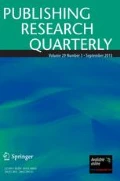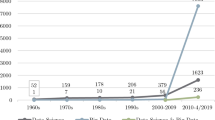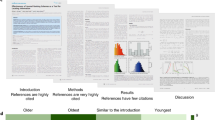Abstract
Identifying strategies for researchers has been a problem investigated from different perspectives, such as choosing research topics or the effect of partner selection. Its importance lies in the effect these choices have in the long term and the importance of taking them into account at the beginning of the scientific career. This study aims to identify publication strategies through behavioral observations for researchers belonging to the engineering area. We analyzed 3,156 researchers affiliated to Mexican National Researchers System with publication data from 2007 to 2016. Publication strategies are defined as a combination of two-year productivity and collaboration indicators, and their success is reflected in terms of citations received in a three-year time window. Using clustering techniques, we identified differentiated patterns aligned with a given citation level. As a result of our case study, we identified low-impact and high-impact publication strategies used by Mexican researchers, which in turn can be used for designing long-term strategies for researchers. Our methodology can be used to discover publication strategies in other areas and geographical regions.




Similar content being viewed by others
Notes
Conacyt. Sistema nacional de investigadores. https://www.conacyt.gob. mx/index.php/el-conacyt/sistema-nacional-de-investigadores.
Gobierno de Mexico. Datos abiertos de Mexico. https://www.datos.gob. mx/
References
Abraham P. Duplicate and salami publications. J Postgrad Med. 2000;46(2):67–9.
Abramo G, D’Angelo CA, Di Costa F. Diversification versus specialization in scientific research: Which strategy pays off? Technovation. 2019;82–83:51–7.
Baldwin RG, Blackburn RT. The academic career as a developmental process: implications for higher education. J Higher Edu. 1981;52(6):598.
Banerjee A, Dave RN (2004) Validating clusters using the Hopkins statistic. In 2004 IEEE international conference on fuzzy systems (IEEE Cat. No.04CH37542), vol 1, pp 149–153
Bozeman B, Gaughan M. How do men and women differ in research collaborations? An analysis of the collaborative motives and strategies of academic researchers. Res Policy. 2011;40(10):1393–402.
Bu Y, Ding Y, Xu J, Liang X, Gao G, Zhao Y. Understanding success through the diversity of collaborators and the milestone of career. J Am Soc Inf Sci. 2018;69(1):87–97.
Ceballos HG, Garza SE, Cantu FJ. Factors influencing the formation of intra-institutional formal re- search groups: group prediction from collaboration, organisational, and topical networks. Scientometrics. 2018;114(1):181–216.
Costas R, Bordons M. The h-index: advantages, limitations and its relation with other bibliometric indicators at the micro level. J Informet. 2007;1(3):193–203.
Costas R, Bordons M. Is g-index better than h-index? An exploratory study at the individual level. Scientometrics. 2008;77(2):267–88.
de Stefano E, de Sequeira Santos MP, Balassiano R. Development of a software for metric studies of transportation engineering journals. Scientometrics. 2016;109(3):1579–91.
Dietz J, Chompalov I, Bozeman B, Lane EO, Park J. Using the curriculum vita to study the career paths of scientists and engineers: An exploratory assessment. Scientometrics. 2000;49(3):419–42.
Ding D, Nguyen B, Gebel K, Bauman A, Bero L. Duplicate and salami publication: a prevalence study of journal policies. Int J Epidemiol. 2019;49(1):281–8.
Glaser J. Macrostructures, careers and knowledge production: a neoinstitutionalist approach. Int J Technol Manage. 2001;22(7–8):698–715.
Gonzalez Ramos AM, Navarrete Cortes J, Cabrera Moreno E. Dancers in the dark: scientific careers according to a gender-blind model of promotion. Interdisc Sci Rev. 2015;40(2):182–203.
Han J, Kamber M. Data mining: concepts and techniques. San Francisco: Kaufmann; 2005.
Kaufman L, Rousseeuw PJ (1990) Partitioning around medoids (program pam). In Finding groups in data: an introduction to cluster analysis, chapter 2. John Wiley & Sons, Ltd, pp 68–125
Kolesnikov S, Fukumoto E, Bozeman B. Researchers’ risk-smoothing publication strategies: Is productivity the enemy of impact? Scientometrics. 2018;116(3):1995–2017.
Lee S, Bozeman B. The impact of research collaboration on scientific productivity. Soc Stud Sci. 2005;35(5):673–702.
Leydesdorff LS, Milojević. Scientometrics. In: Wright JD, editor. International encyclopedia of the social & behavioral sciences (Second Edition) (Second. Edition. Oxford: Elsevier; 2015. p. 322–7.
MacQueen J (1967) Some methods for classification and analysis of multivariate observations. In Proceedings of the Fifth Berkeley Symposium on Mathematical Statistics and Probability, Volume 1: Statistics, pp 281–297. University of California Press
Milojevic S, Radicchi F, Walsh JP. Changing demographics of scientific careers: The rise of the temporary workforce. Proc Natl Acad Sci. 2018;115(50):12616–23.
Petersen AM. Quantifying the impact of weak, strong, and super ties in scientific careers. Proc Natl Acad Sci. 2015;112(34):E4671–80.
Petersen AM, Fortunato S, Pan RK, Kaski K, Penner O, Rungi A, Riccaboni M, Stanley HE, Pammolli F. Reputation and impact in academic careers. Proc Natl Acad Sci. 2014;111(43):15316–21.
Powers TL, Swan JE, Bos T, Patton JF. Career research productivity patterns of marketing academicians. J Bus Res. 1998;42(1):75–86.
Schotten M, El Aisati M, Meester W, Steiginga S, Ross C (2017) A brief history of Scopus: The world’s largest abstract and citation database of scientific literature. In Cantu-Ortiz FJ (ed) Research analytics: boosting university productivity and competitiveness through scientometrics, Chapter 3, pp. 33–57. (Research Products, Elsevier B.V.: CRC Press.
Simpson EH. Measurement of diversity. Nature. 1949;163(4148):688–688.
Xiangfeng M, Xinhai L, Yan Z, Wolfgang G (2017) Event detection in scientific mapping based on a novel structural community similarity algorithm. In ISSI, pp. 258–269
Zhang L, Glänzel W. Where demographics meets scientometrics: towards a dynamic career analysis. Scientometrics. 2012;91(2):617–30.
Zhang Y, Yu Q. What is the best article publishing strategy for early career scientists? Scientometrics. 2020;122(1):397–408.
Ziman J, Schmitt RW. Prometheus bound: Science in a dynamic steady state. Am J Phys. 1995;63(5):476–7.
Zitt M, Bassecoulard E. Challenges for scientometric indicators: data demining, knowledge-flow measurements and diversity issues. Ethics Sci Environ Politics. 2008;8:49–60.
Zuckerman H. Theory choice and problem choice in science. Sociol Inq. 1978;48(3–4):65–95.
Acknowledgements
Partial financial support was received from CONACYT and Tecnologico de Monterrey.
Author information
Authors and Affiliations
Corresponding author
Additional information
Publisher's Note
Springer Nature remains neutral with regard to jurisdictional claims in published maps and institutional affiliations.
Appendix A: Multiple Regression Coefficients
Appendix A: Multiple Regression Coefficients
We present the coefficients of the regression models, which can be used for explaining the relevance of every productivity and collaboration indicator on citation.
See Tables
6,
7,
8, and
9.
Rights and permissions
About this article
Cite this article
Ayala-Bastidas, G., Ceballos, H.G., Garza, S.E. et al. Identifying Researchers’ Publication Strategies by Clustering Publication and Impact Data. Pub Res Q 37, 347–363 (2021). https://doi.org/10.1007/s12109-021-09832-7
Accepted:
Published:
Issue Date:
DOI: https://doi.org/10.1007/s12109-021-09832-7




